Istanbul is a city where the continents of Europe and Asia converge. Founded as Byzantion in the 7th century BC, this venerable city has served as the capital of empires, witnessed the rise and fall of civilizations and absorbed influences from across the globe. Within the hallowed halls of the Hagia Sophia, one of the Istanbul tourist attractions and a magnificent architectural marvel blending Byzantine and Ottoman styles, one can feel the weight of history.
Why Istanbul?
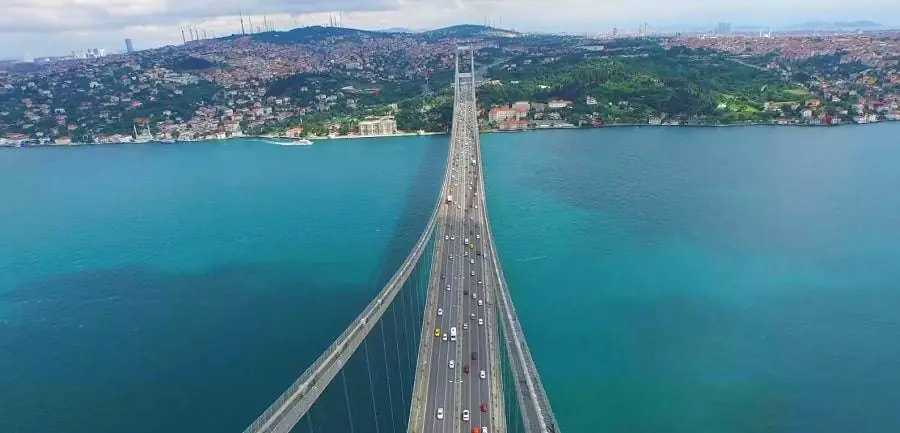
More than just a historical treasure trove, Istanbul pulsates with life. The aroma of freshly baked simit (Turkish bagels) fills the air as locals and visitors alike navigate the labyrinthine alleys of the Grand Bazaar. The melodic call to prayer echoes through the city, weaving a tapestry of sound that transcends language.
As the sun dips below the horizon, cruise along the Bosphorus Strait, and witness the city’s silhouette transform into a breathtaking display of twinkling lights. Whether you seek historical immersion, cultural exploration, or simply a taste of authentic Turkish charm, Istanbul promises an unforgettable experience.
Sultanahmet District
Hagia Sophia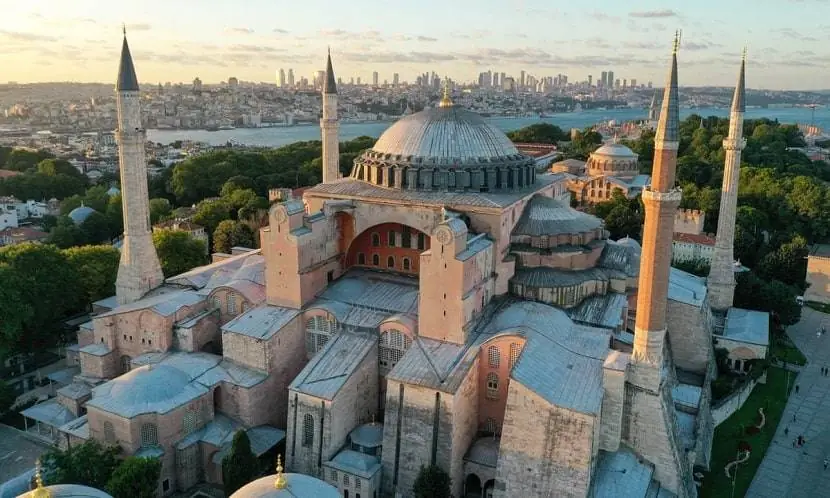
Standing tall at the heart of Sultanahmet, the Hagia Sophia, meaning “Holy Wisdom” in Greek, transcends the definition of a mere structure. It is a monument that embodies the rich tapestry of Istanbul’s history, having served as a church, mosque, and museum throughout its illustrious past. Its majestic dome, a pioneering feat of Byzantine engineering, soars 55.6 meters above the ground, leaving visitors awestruck by its immensity.
The interior, adorned with captivating mosaics and intricate calligraphy, whispers tales of emperors, religious ceremonies, and artistic mastery. Today, the Hagia Sophia serves as a functioning mosque, welcoming visitors of all faiths to experience its enduring grandeur.
Blue Mosque (Sultan Ahmed Mosque)
Just across the square from the Hagia Sophia stands the Sultan Ahmed Mosque, more commonly known as the Blue Mosque. Its moniker originates from the mesmerizing Iznik tiles adorning its exterior, their cerulean hues shimmering in the sunlight. This iconic landmark, commissioned by Sultan Ahmed I in the early 17th century, is a prime example of classical Ottoman architecture.
Six minarets pierce the sky, symbolizing the sultan’s status as the sixth Ottoman ruler to hold the title of Caliph. The exquisite interior, featuring intricate floral patterns and stained glass windows, further underscores the artistry and opulence of the Ottoman era. The Blue Mosque remains an active mosque, serving as a spiritual haven for locals and a breathtaking spectacle for visitors.
Topkapi Palace
Nestled amidst the bustling streets of Sultanahmet lies the Topkapi Palace, the grand administrative center of the Ottoman Empire for centuries. Stepping through the ornate Sublime Porte, visitors embark on a journey through time, exploring the sprawling complex that housed sultans, their families, and a vast entourage. Within the palace walls lie courtyards, pavilions, and the Harem, the sultan’s private quarters.
The Topkapi Palace houses a treasure trove of artifacts, including imperial jewels, priceless Iznik ceramics, and captivating Ottoman miniatures. Today, this magnificent complex serves as a museum, offering a glimpse into the opulent lifestyle and intricate political landscape of the Ottoman Empire.
Basilica Cistern
Descending into the cool, cavernous depths of the Basilica Cistern is like stepping into another world. This remarkable underground reservoir, built by Emperor Justinian I in the 6th century, served as a crucial water source for the Byzantine Empire. Rows of towering columns, some believed to be salvaged from ancient temples, line the vast space, their reflections shimmering in the water below.
Two Medusa heads incorporated into the base of columns add an air of mystery to this subterranean marvel. The Basilica Cistern stands as a testament to the ingenuity and foresight of Byzantine engineers, offering a unique and captivating glimpse into the city’s hidden past.
The Bosphorus Strait

Bosphorus Cruise
Embark on a captivating Bosphorus cruise and witness the magic of Istanbul unfold before your eyes. This narrow waterway, forming the natural boundary between Europe and Asia, has been a vital trade route for centuries. As you glide along the Bosphorus, iconic landmarks like the Hagia Sophia and Dolmabahçe Palace emerge from the city skyline, offering a glimpse into Istanbul’s rich past. Lush green hills and historical Ottoman mansions line the shores, creating a captivating panorama.
The Bosphorus cruise not only provides breathtaking views but also allows you to experience the vibrant maritime activity that defines this vital waterway. Witness a diverse tapestry of vessels, from traditional fishing boats to modern cargo ships, traversing the Bosphorus, painting a picture of Istanbul’s dynamic connection with the world.
Dolmabahçe Palace
Standing majestically on the shores of the Bosphorus, Dolmabahçe Palace, one of the Istanbul tourist attractions, is a testament to the extravagant tastes of the later Ottoman sultans. Built in the mid-19th century, this magnificent palace served as the administrative center of the empire, replacing Topkapi Palace. Its opulent design, blending European and Ottoman architectural styles, features a plethora of chandeliers, gilded ceilings, and exquisite carpets.
The palace boasts impressive reception halls, lavishly decorated private quarters, and breathtaking gardens overlooking the Bosphorus. Dolmabahçe Palace stands as a symbol of the empire’s final flourish, offering a glimpse into the grandeur and opulence of the Ottoman era.
Ortaköy Mosque
Nestled amidst the vibrant neighborhood of Ortaköy, stands a captivating architectural gem – the Ortaköy Mosque, one of the beautiful places in Istanbul. Built in the mid-19th century, this neo-baroque style mosque boasts a unique silhouette, featuring a single pencil-shaped minaret that pierces the sky.
The mosque’s exterior, adorned with white marble and intricate details, reflects the sunlight, creating a captivating sight. Inside, the mosque’s interior features a light and airy atmosphere with elegant chandeliers and stained glass windows. Ortaköy Mosque, with its picturesque location on the Bosphorus shore, has become a popular landmark not only for its religious significance but also for its captivating beauty.
Maiden’s Tower
Standing proudly amidst the waters of the Bosphorus, the Maiden’s Tower (Kız Kulesi) is shrouded in an aura of mystery and captivating legends. Its history stretches back centuries, with various iterations serving as a watchtower, a prison, and even a quarantine station.
Today, the tower has been transformed into a popular restaurant, offering visitors a chance to dine while enjoying panoramic views of the city and the Bosphorus. The captivating silhouette of the Maiden’s Tower, coupled with its intriguing history and enchanting legends, adds a touch of romance and mystique to the Bosphorus landscape.
Galata District
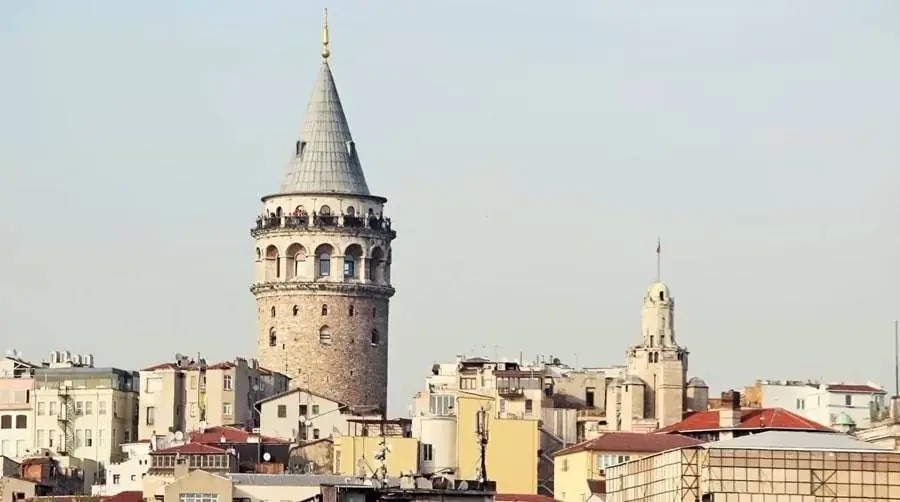
Galata Tower
Soaring above the vibrant Galata neighborhood, the Galata Tower stands as a majestic sentinel, witnessing the city’s transformation through the ages. Originally built in the 14th century by the Genoese, this historical landmark served as a watchtower and prison throughout its illustrious past. Today, the tower’s primary purpose is to mesmerize visitors with its breathtaking panoramic views.
Ascend to the observation deck and witness Istanbul unfold before you, its historical tapestry stretching from the Hagia Sophia to the bustling streets of Beyoğlu. The Bosphorus, sparkling in the sunlight, forms a natural boundary between Europe and Asia, offering a captivating glimpse of the city’s unique location.
İstiklal Avenue
Just below the Galata Tower lies İstiklal Avenue, a vibrant pedestrian haven and the heart of modern Istanbul. This historic avenue, stretching over 1.4 kilometers, is a captivating blend of old and new. Nostalgic red trams weave through the bustling crowds, while modern shops and street performers line the avenue, creating a dynamic atmosphere.
From renowned international brands to local boutiques, İstiklal Avenue caters to every shopping desire. In the evening, the avenue transforms into a vibrant hub of entertainment, with restaurants, cafes, and bars offering a taste of Istanbul’s nightlife.
Galata Bridge
Spanning the Golden Horn, the Galata Bridge serves as a vital link between the historic Eminönü district on the south and the vibrant Galata neighborhood on the north. This iconic landmark, initially built in the 19th century, has undergone several transformations throughout its history.
Today, the bridge is a multi-layered structure, featuring a lower level dedicated to pedestrians and fishermen, an upper level accommodating vehicle traffic, and restaurants offering stunning views of the city and the Bosphorus. The Galata Bridge pulsates with life, serving as a microcosm of Istanbul, where cultures and traditions interweave, creating a unique and captivating atmosphere.
Taksim Square
Taksim Square, situated at the northern end of İstiklal Avenue, is the beating heart of modern Istanbul. This central plaza has served as a significant gathering point for social and political events for decades. The iconic Republic Monument stands at the square’s center, commemorating the founding of the Turkish Republic in 1923.
Surrounding Taksim Square are modern hotels, restaurants, and shops, catering to the city’s energetic and cosmopolitan atmosphere. Whether witnessing vibrant street performances, enjoying a leisurely meal, or simply soaking up the energy of the city, Taksim Square offers a quintessential Istanbul experience.
Beyoğlu District
Istanbul Modern
Nestled in the heart of Beyoğlu, Istanbul Modern stands as a beacon of contemporary Turkish art. Established in 2004, this impressive museum houses an extensive collection of paintings, sculptures, installations, and new media works by renowned Turkish artists.
The museum, one of the Istanbul tourist attractions, also hosts temporary exhibitions, showcasing the diverse and dynamic landscape of contemporary Turkish art, both nationally and internationally. Through its captivating displays, Istanbul Modern offers visitors a window into the creative spirit and evolving artistic expressions of modern Turkey.
Pera Museum
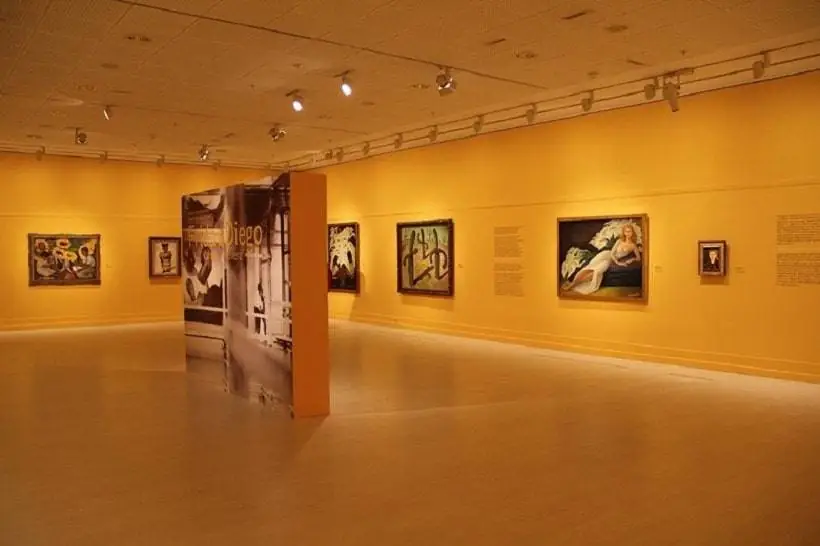
Situated in the historic Tepebaşı Palace, the Pera Museum boasts an impressive collection spanning various cultures and eras. From Orientalist paintings depicting the allure of the East to captivating ethnographic artifacts, the museum offers a diverse journey through artistic traditions.
Visitors can explore collections of Ottoman ceramics, Armenian calligraphy, and mesmerizing works by renowned European artists like Renoir, Monet, and Sisley. The Pera Museum not only celebrates Turkish artistic heritage but also fosters intercultural dialogue, providing a platform for appreciation of diverse artistic expressions from across the globe.
Galata Mevlevi House
Delving deeper into the cultural tapestry of Beyoğlu, we encounter the Galata Mevlevi House, a historical landmark steeped in spiritual significance. This meticulously restored lodge, dating back to the 15th century, served as a center for the Mevlevi Order, also known as the Whirling Dervishes. Within its walls, Sufi mystics practiced their unique form of devotional worship, characterized by the iconic whirling ceremony, known as the “Sema.”
Today, the Galata Mevlevi House functions as a museum, showcasing artifacts and exhibits that illuminate the history, rituals, and philosophy of the Mevlevi Order. Visitors can gain insights into Sufi traditions, appreciating the profound spirituality and artistic expressions that define this unique Islamic mystical path.
Galata Whirling Dervish Hall
Adjacent to the Galata Mevlevi House lies the Whirling Dervish Hall, offering a rare opportunity to witness the captivating Sema ceremony firsthand. This deeply spiritual ritual involves dervishes adorned in white robes, whirling in a state of spiritual ecstasy to the sounds of traditional music. The ceremony symbolizes the seeker’s journey towards divine truth, representing a metaphorical ascent through the spiritual spheres.
Observing the Sema requires respect and silence, allowing visitors to experience the profound beauty and contemplative essence of this ancient Sufi tradition. By attending a ceremony at the Galata Whirling Dervish Hall, one can gain a deeper understanding of the Mevlevi Order’s rich spiritual heritage and witness a captivating performance that transcends cultural and religious boundaries.
Istanbul Asian Side
Üsküdar, Istanbul
Crossing the Bosphorus Bridge, one of the Istanbul tourist attractions, we embark on a journey to explore the captivating Asian side of Istanbul. Our first stop is Üsküdar, a charming district known for its serene atmosphere and picturesque setting along the Bosphorus. Here, historical mosques and traditional wooden houses line the narrow streets, offering a glimpse into a more traditional way of life.
Visitors can wander along the scenic coastline, enjoying breathtaking views of the city skyline and the bustling ferry traffic on the Bosphorus. Üsküdar also boasts historical landmarks like the Beylerbeyi Palace, a former summer residence of Ottoman sultans, and the Mihrimah Sultan Mosque, known for its exquisite tilework and elegant architecture.
Maiden’s Tower
Having already encountered the Maiden’s Tower from afar, a visit to the Asian shore allows for a closer exploration of this iconic structure. As mentioned earlier, the tower’s history stretches back centuries, shrouded in captivating legends.
Visitors can now enter the tower, exploring its various chambers and exhibits that delve into its fascinating past. The observation deck at the top offers stunning panoramic views of the Bosphorus and both the European and Asian sides of Istanbul, providing a unique perspective of the city’s vastness and geographical significance.
Çamlıca Hill
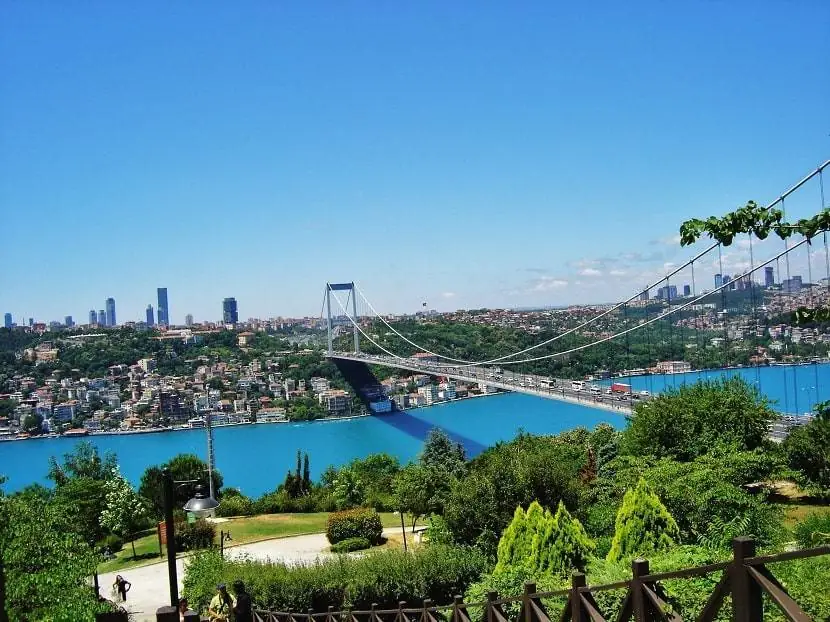
Perched atop one of the highest points in Istanbul, Çamlıca Hill offers breathtaking panoramic views that encompass the city’s sprawling landscape. From this vantage point, visitors can witness the grandeur of the Bosphorus, the iconic landmarks like Hagia Sophia and Dolmabahçe Palace, and the historical districts that define Istanbul’s rich tapestry.
Çamlıca Hill also boasts historical significance, having served as a strategic location for military installations throughout the ages. Today, visitors can explore Teleferik, a modern cable car system offering a scenic journey to the hilltop, or enjoy leisure activities like picnicking and admiring the captivating sunset views.
Kadıköy
Our exploration of the Asian side concludes in the vibrant district of Kadıköy, a melting pot of cultures and a haven for culinary delights. The bustling Kadıköy Bazaar, a labyrinthine maze of shops and stalls, offers everything from fresh produce and local spices to traditional Turkish handicrafts and souvenirs. Foodies can embark on a culinary adventure, savoring the diverse flavors of Turkish cuisine at the numerous restaurants and cafes lining the streets.
Kadıköy also boasts a vibrant nightlife scene with trendy bars and music venues, catering to the city’s young and energetic crowd. With its unique blend of tradition and modernity, Kadıköy offers a captivating experience for visitors seeking to discover the cultural and culinary delights of Istanbul’s Asian side.
Grand Bazaar
Step into the labyrinthine world of the Grand Bazaar, the largest and oldest covered market in the world and one of the best places to visit in Istanbul at night. Prepare to be overwhelmed by a sensory overload as you navigate through its 61 covered streets, lined with over 4,000 shops overflowing with an astounding variety of goods. From hand-woven carpets and intricate jewelry to traditional Turkish delight and fragrant spices, the Grand Bazaar caters to every shopping desire.
Breathe in the intoxicating aroma of spices, admire the vibrant colors of textiles, and lose yourself in the symphony of haggling and friendly banter. Don’t be afraid to negotiate prices! This is an integral part of the bazaar experience, and a friendly approach goes a long way. Venture beyond the main aisles to discover hidden gems and unique souvenirs offered by local artisans.
Spice Bazaar
Just a short distance away lies the Spice Bazaar, also known as the Egyptian Bazaar – one of the Istanbul tourist attractions. While smaller than the Grand Bazaar, it boasts a unique atmosphere filled with the intoxicating fragrance of spices and the vibrant colors of exotic delicacies.
Lose yourself in the heady scents of cinnamon, saffron, and freshly ground coffee, each offering a unique olfactory experience. Discover an array of Turkish delights in every color and flavor imaginable, alongside dried fruits, nuts, and an assortment of teas and herbs. Don’t hesitate to ask for samples! Many vendors are happy to share their wares, allowing you to discover new and exciting flavors.
Day Trips from Istanbul
While Istanbul itself offers a wealth of historical and cultural treasures, venturing beyond the city limits unveils a diverse tapestry of landscapes, ancient wonders, and charming towns, each promising a unique day trip experience.
Princes’ Islands
Escape the bustling city and embrace the serenity of the Princes’ Islands, an archipelago located just off the coast of Istanbul. Accessible by ferry, these car-free islands offer a car-free haven of natural beauty, historical landmarks, and charming villages. Explore Büyükada, the largest island, and rent a bicycle to explore its historical mansions, serene beaches, and Aya Yorgi Monastery, perched atop a hill offering panoramic views.
Bursa
Journey southeast of Istanbul to Bursa, the former capital of the Ottoman Empire. Immerse yourself in the city’s rich history, visiting the Grand Mosque, one of the largest mosques in Turkey, and the Bursa Bazaar, a vibrant marketplace overflowing with local handicrafts and traditional Turkish delights. Ascend Mount Uludağ via cable car and enjoy breathtaking views of the city or indulge in winter sports during the colder months.
Ephesus
Step back in time and explore the remarkably well-preserved ruins of Ephesus, an ancient Greek and Roman city located near the Aegean coast. Marvel at the grandeur of the Library of Celsus, the Great Theatre, and the Temple of Artemis, one of the Seven Wonders of the Ancient World. Witness the ingenuity of Roman engineering through the intricate network of streets and channels, and gain insights into daily life during this bygone era. All these features of this region make it one of the popular places to visit in istanbul with family.
Pamukkale
Embark on a journey to Pamukkale, a natural wonder renowned for its cascading travertine terraces, resembling frozen waterfalls. These unique formations which are actually top among the best Istanbul tourist attractions, created by mineral-rich hot springs, have earned the site the nickname “Cotton Castle.” Bathe in the ancient Cleopatra’s Pool, a historical thermal pool overlooking the travertines and one of the Istanbul tourist attractions and immerse yourself in the natural wonders and historical significance of this captivating location.
Practical Tips for Visiting Istanbul
Best Time to Visit Istanbul
Istanbul enjoys a diverse climate, offering distinct experiences throughout the year. Here’s a breakdown to help you choose the ideal time for your visit:
- Spring (March-May): Pleasant weather with blooming flowers, ideal for exploring the city comfortably. Crowds are moderate, and hotel rates tend to be lower compared to peak season.
- Summer (June-August): Hot and sunny weather perfect for beach activities and enjoying the outdoors. However, expect larger crowds and higher hotel rates.
- Autumn (September-November): Milder temperatures and fewer crowds make it a good shoulder season for sightseeing.
- Winter (December-February): Colder weather with occasional rain or snow. This time offers the lowest hotel rates and a unique perspective on the city, but some attractions may have limited hours.
Transportation
Istanbul boasts a well-developed and efficient public transportation system, making it easy to navigate the city. This guide will help pinpointing Istanbul tourist attractions. Here are your options:
- IstanbulKart: Invest in an IstanbulKart, a prepaid transportation card that grants access to metros, trams, buses, ferries, and funiculars.
- Metro: The city’s modern metro system is the fastest way to travel long distances.
- Tram: Traditional trams offer a scenic way to explore historical neighborhoods like Sultanahmet and Beyoğlu.
- Bus: Buses are a cost-effective option, but routes can be complex and traffic can be heavy.
- Ferry: Ferries offer a scenic way to travel across the Bosphorus and explore the Asian side of Istanbul.
- Taxis: While convenient, taxis can be expensive. Agree on the fare beforehand or use apps like Uber and BiTaksi for reliable service.
Accommodation Options
Istanbul caters to diverse budgets with a wide range of accommodation options:
- Luxury Hotels: For a luxurious experience, opulent hotels like Çırağan Palace Kempinski or Four Seasons Hotel Istanbul at Sultanahmet offer unparalleled service and stunning views.
- Boutique Hotels: Charming boutique hotels scattered throughout the city provide a unique and personalized stay.
- Budget Hotels and Hostels: Affordable hotels and hostels in central locations like Sultanahmet and Beyoğlu are ideal for budget-conscious travelers.
- Safety Tips and Cultural Etiquette for Visitors
- Istanbul is generally a safe city for tourists. However, some basic precautions are recommended:
- Be aware of your surroundings: Keep an eye on your belongings, especially in crowded areas.
- Dress modestly: While Istanbul is a cosmopolitan city, dressing modestly, especially when visiting religious sites, is appreciated.
- Respect local customs: Avoid public displays of affection and be mindful of prayer times during visits to mosques.
- Learn a few basic Turkish phrases: A few simple greetings and phrases go a long way in showing respect and appreciation for the local culture.

